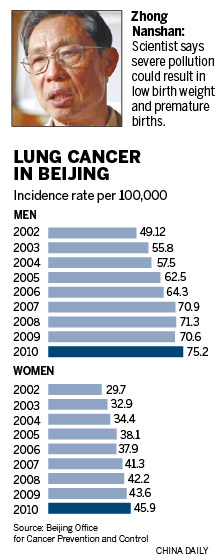
Wednesday, February 26, 2014
20140227 China Daily_Lung cancer cases linked to air quality

Tuesday, February 25, 2014
20140225 China Daily_Expat view: Dealing with pollution at home
Editor 's note : Air quality has become a huge concern for many expats living in China , as 15 percent of the country is experiencing smog . A handful of expats share their experiences with combating the smog in their home country , lessons that China can draw from .
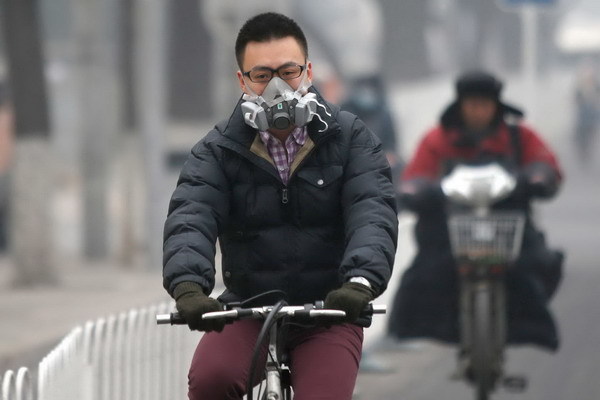
Air pollution fight needs legal help 
Nobody likes dirty air and water but with the modernization comes pollution , or does it ?In our rush to make life easier , society decided to go blindly into the future without a thought of the ramifications . The results have been great profits for individuals who have invested their time and money in ventures that have improved the quality of life for many . The side effect in some cases has been a pollutant in the air and or water that all must endure .If we can create pollution , then we can erase it also . The problem is time and money . Time and money just happens to be the investment that the creators of the pollution made to make life better for all . So they screwed up a little or a lot in some cases .The US had problems similar to what China is facing now , Industry Going Amok . The results left scars on the land , dirty air and water , land so polluted nobody can live on it . Finally the government opened their eyes and said NO MORE POLLUTION to these INDUSTRIES . Strict laws requiring clean air and water qualities were adopted .The US Gov . created the EPA , Environmental Protection Agency to oversee these laws . All the states followed these regulations , and added additional requirements that enhanced these environmental laws . The end result was cleaner air and water .You might ask who paid for the clean air and water ? It 's a very simple answer . The costs for keeping the environment clean eventually become the burden of the people . The equipment needed to manufacture the lifestyle we all want is added to the cost of making what we want .It will take time and money to repair today 's issues with the environment . The longer people wait , the worse it gets and the more it costs . Set up the laws that require clean air and water , then enforce them .SDIvester from the US


20140225 China Daily_Top 10 cities with worst smog in China
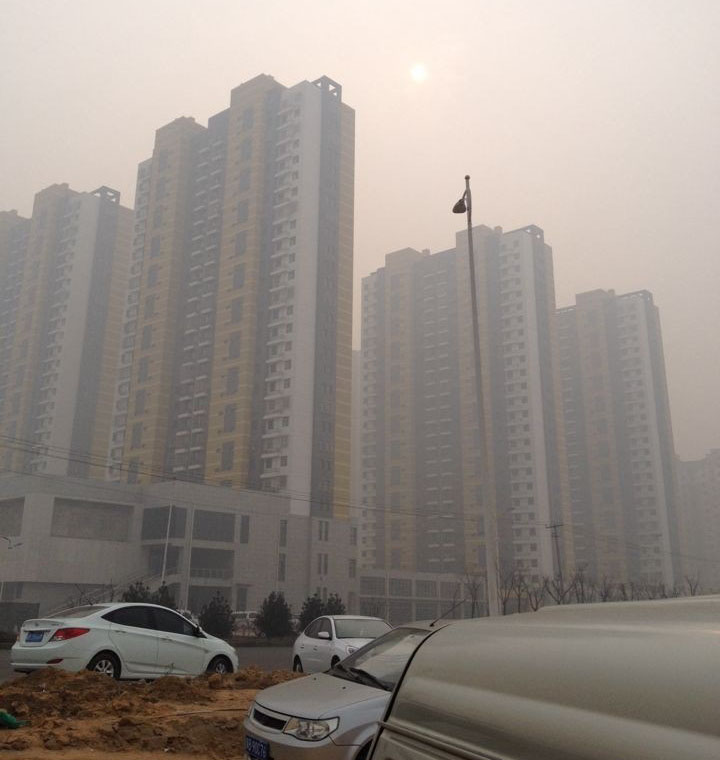
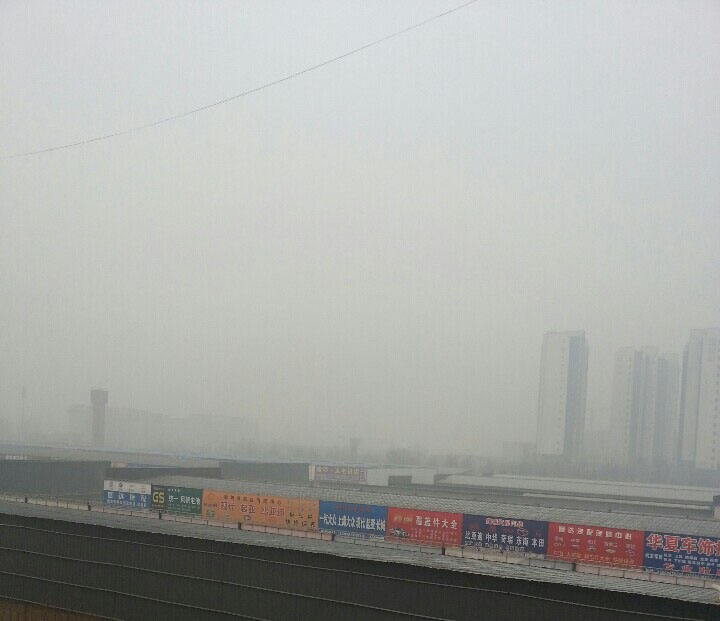
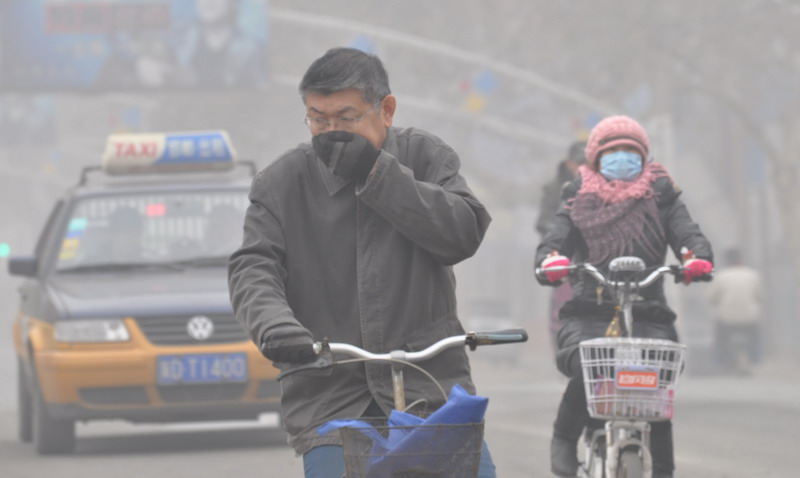
No 6 Qinhuangdao, Hebei province
The AQI of Qinhuangdao city in northeastern Hebei province was 431 on Feb 25, with PM2.5 standing at 349μg/m³.
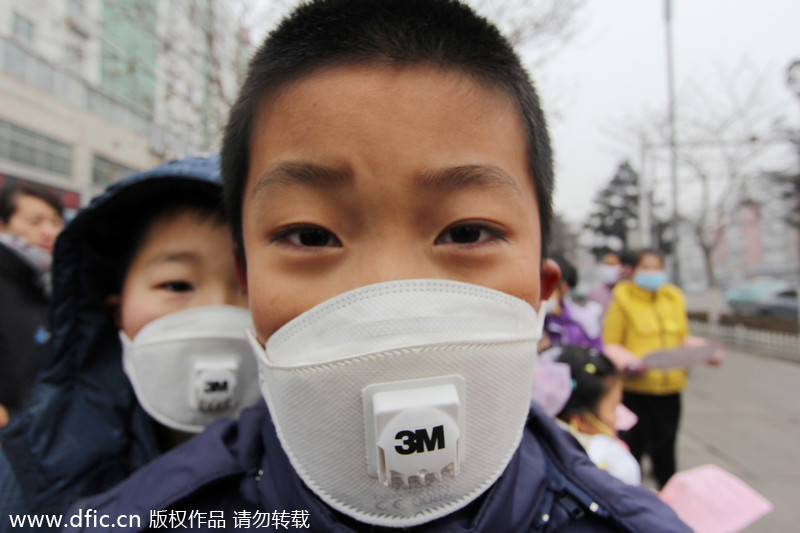
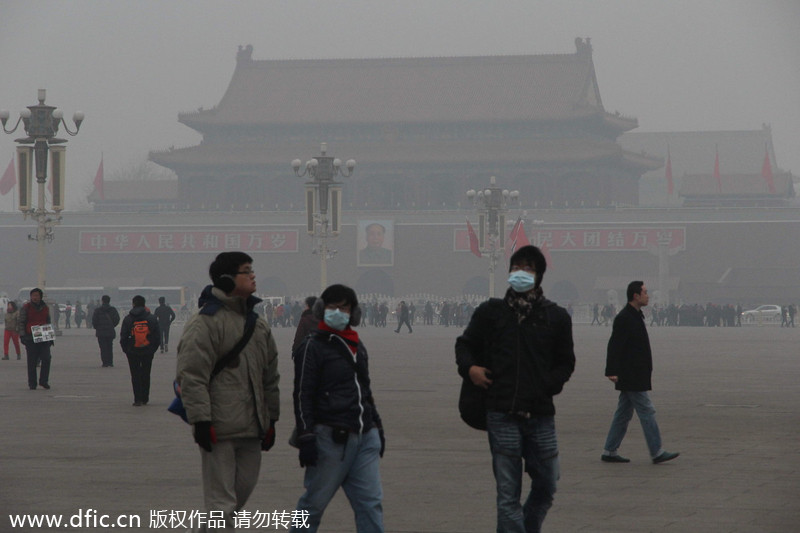
20130904 BBC_Fukushima leak problems

The Fukushima Daiichi site is now populated by large numbers of storage tanks
Workers at the damaged Fukushima nuclear power facility in Japan have to deal with huge volumes of contaminated water. The difficulties of handling this water, some of which has leaked from storage tanks, has prompted the authorities to consider measures such as an "ice wall" to better contain the area around the troublesome plant.
What is the cause of the continuing leak problems at the plant?
The ongoing problem with water seems to be coming, in the main, from poorly constructed storage tanks. Tepco, the company that operates Fukushima, is using huge volumes of water every day to cool the reactors that once generated electricity at the plant. When the water comes in contact with fuel rods at the heart of the reactors, it becomes highly radioactive and has to be stored in large containers on the site where the water is then processed to remove some of the most dangerous elements.
Every day, the company has an extra 400 tonnes of irradiated water to store. This is roughly a 10th of an Olympic-sized swimming pool. The water is held in some of the 1,000 water tanks the company has erected on site. But there are problems with these tanks. There have been at least five leak events from the tanks, with the most recent, in August, being the largest. This saw contaminated water flood a walled concrete pad under the faulty tank, and then pass through a rainwater valve to soak the surrounding soil.
Officials say the problem may have been related to the fact that the tank was moved after its original installation at the site and was not reassembled properly, and/or that its plastic seals became damaged in the process. Tepco workers have since been trying to clean up the spilled water and remove any contaminated soil.
How does Fukushima's location exacerbate the water problems?
There are steep hills behind the Fukushima plant. Rainwater runs down from those hills, through the ground on which the plant is built and out into the ocean. Radioactivity readings offshore have not fallen in the way many experts say they should have, indicating that this groundwater is picking up radioactive elements on its journey. Tepco is working on a series of plans to stop more radioactive water getting into the ocean, including erecting steel barriers and injecting chemicals into the earth to create an impermeable layer.

What is the ice wall that is being proposed?
This is the latest solution being proposed. It involves running pipes through the affected ground, and pumping coolant through them. "This causes the local groundwater to freeze, forming a barrier to the movement of contaminated ground water," explains Prof Neil Hyatt from the University of Sheffield, UK. "A similar process is used in underground uranium mining, to prevent flooding of a working area at depth, so the basic engineering principles are quite well understood. However, this is a very energy intensive process to maintain, so there will need to be careful design and trial work to produce an effective barrier that minimises energy demand."
What is the eventual solution to the stored water issue?
Tepco has changed its inspection protocols for the storage tanks and claims this should pick up any future problems much earlier. But given the huge volumes of water being handled at the site, it is likely that Tepco will have to introduce bigger, more robust storage tanks at some point - similar in scale to the crude oil depot tanks for which there is good local technology in Japan. The water itself needs to be filtered, to take out the most radioactive elements. This "cleaned" water is likely then to go into the Pacific. Even before then, such is the volume of contaminated cooling water coming out of the reactors that Tepco may be forced simply to release some water unfiltered into the ocean.

 Water from the storage tanks has seeped into the groundwater and then into the sea. Efforts to use a chemical barrier to prevent sea contamination have not worked.
Water from the storage tanks has seeped into the groundwater and then into the sea. Efforts to use a chemical barrier to prevent sea contamination have not worked.20140220 BBC_Japan's Fukushima nuclear plant leaks radioactive water

 The leak is thought to have occurred after a storage tank overflowed
The leak is thought to have occurred after a storage tank overflowed
Around 100 tonnes of highly radioactive water have leaked from a storage tank at Japan's Fukushima nuclear plant, operator Tokyo Electric (Tepco) says.
The toxic water may have overflowed after a valve was left open by mistake, Tepco said.
However the water was unlikely to have reached the ocean, the operator added.
The plant, which was damaged by an earthquake and tsunami in 2011, has faced multiple problems including leaks and power cuts since the disaster.
The latest leak is the most serious since August, when the plant leaked 300 tonnes of water, prompting Japan's nuclear agency to raise the incident's alert level.
'Contaminated earth'
The water from Wednesday's leak was radioactive, with a reading of 230 million becquerels per litre of radioactive isotopes, Tepco spokesman Masayuki Ono told reporters.
A becquerel is a unit used to measure radioactivity. WHO guidance advises against drinking water with radioactivity levels higher than 10 becquerels per litre.
"We apologise for worrying the public with such a leak," Mr Ono said. "Water is unlikely to have reached the ocean as there is no drainage in that tank area."
"We are now in the process of recovering the leaked water and the earth it has contaminated," he added.
On 11 March 2011, an earthquake and tsunami crippled the plant. Waves knocked out cooling systems for the reactors, leading to meltdowns at three of them.
Water is being pumped in to cool the reactors. However, this creates large amounts of contaminated water that must be stored securely.
The Fukushima nuclear power plant suffered a number of setbacks last year, including worker errors and a series of toxic water leaks that have lead to concerns contaminated water is mixing with groundwater that is flowing into the sea.
Previous Fukushima problems
- 9 Oct 2013: Six workers are accidentally doused in radioactive water
- 7 Oct 2013: A plant worker accidentally switches off power to pumps used for cooling damaged reactors
- 3 Oct 2013: Tepco says there is a radioactive water leak after workers overfill a storage tank
- 21 Aug 2013: Japan's nuclear agency upgrades Fukushima alert level
- 20 Aug 2013: Tepco says 300 tonnes of radioactive water has leaked from a storage tank into the ground
- July 2013: Tepco for the first time admits radioactive water is going into the sea
- June 2013: Tepco says radioactive water leaking from a storage tank to the ground
- April 2013: Tepco suspects a fresh radioactive water leak at Fukushima
- March 2013: Tepco suspects a rodent may have been behind a power cut that shut down cooling systems
- Dec 2011 Contaminated water leaks from a treatment system, caused by a crack in the foundation
20140225 BBC_North American scientists track incoming Fukushima plume

Models are used to forecast the likely progression of radionuclides from Fukushima
The likely scale of the radioactive plume of water from Fukushima due to hit the west coast of North America should be known in the next two months.
Only minute traces of pollution from the beleaguered Japanese power plant have so far been recorded in Canadian continental waters.
This will increase as contaminants disperse eastwards on Pacific currents.
But scientists stress that even the peak measurements will be well within the limits set by safety authorities.
Since the 2011 Fukushima accident, researchers from the Bedford Institute of Oceanography have been sampling waters along a line running almost 2,000km due west of Vancouver, British Columbia.
And by June of last year, they were detecting quantities of radioactive caesium-137 and 134 along the sampling line’s entire length.
Although the radioactivity concentrations remain extremely low – less than one becquerel per cubic metre of water – they have allowed the scientists to start to validate the two models that are being used to forecast the probable future progression of the plume.
And he emphasised again: “These levels are still well below maximum permissible concentrations in drinking water in Canada for caesium-137 of 10,000 becquerels per cubic metre of water – so, it’s clearly not an environmental or human-health radiological threat.”
Monday, February 17, 2014
20140218 Sun Daily_「驅蝗」爆衝突遊客嗌驚
【太陽報專訊】港府早前發表旅客接待能力評估報告,預計未來三年將有七千萬名旅客訪港,令人關注本港對旅客的承載力。昨有反對內地個人遊旅客來港的團體在尖沙咀發起「驅蝗行動」,成員手持港英旗幟與內地遊客對罵,又在廣東道名店外叫囂,更多次與支持個人遊團體互相挑釁及推撞衝突。有廣東道金飾店為自保不惜「落閘」,亦有內地遊客直言感到「有啲驚」。混亂期間有人報警稱一名黃姓二十三歲男子被打致面部受傷,送伊利沙伯醫院治理,警方則通緝一名年約三十歲男子,案件列襲擊及有人受傷處理。
團體「愛港之聲」昨午在尖沙咀廣東道設立街站收集市民簽名支持個人遊,並派發單張及以普通話廣播歡迎內地遊客。一名聲稱「反赤化、反殖民」組織成員走到街站「挑機」,質問有關單張為何以簡體字書寫,又做出粗口手勢,雙方遂起衝突,在場警員立即分隔調停。
相若時間,由網上組織聲稱「反赤化」團體約二十人在尖沙咀碼頭發起「驅蝗行動」,成員高舉多面港英旗幟,又多次叫途經的內地遊客不要來香港,有內地女遊客不滿,雙方一度對罵。未幾,前愛港之聲成員傅振中發起的「保衞香港運動」二十多人亦手持國旗及區旗到達碼頭,並指罵「反赤化」成員「攪亂香港」,是「賣國賊」及「漢奸」。「反赤化」成員則反擊指罵對方是「支那人」、「狗奴才」等。警方以鐵欄將兩批示威者分隔,但雙方仍隔空罵戰。
團體「愛港之聲」昨午在尖沙咀廣東道設立街站收集市民簽名支持個人遊,並派發單張及以普通話廣播歡迎內地遊客。一名聲稱「反赤化、反殖民」組織成員走到街站「挑機」,質問有關單張為何以簡體字書寫,又做出粗口手勢,雙方遂起衝突,在場警員立即分隔調停。
相若時間,由網上組織聲稱「反赤化」團體約二十人在尖沙咀碼頭發起「驅蝗行動」,成員高舉多面港英旗幟,又多次叫途經的內地遊客不要來香港,有內地女遊客不滿,雙方一度對罵。未幾,前愛港之聲成員傅振中發起的「保衞香港運動」二十多人亦手持國旗及區旗到達碼頭,並指罵「反赤化」成員「攪亂香港」,是「賣國賊」及「漢奸」。「反赤化」成員則反擊指罵對方是「支那人」、「狗奴才」等。警方以鐵欄將兩批示威者分隔,但雙方仍隔空罵戰。
「反赤化」成員之一梁金成表示,本港難負荷不斷增加的內地遊客,但港府只顧旅遊業發展,漠視要求取消個人遊一簽多行的聲音,故「企出嚟」表達意見。捲入教師爆粗風波的林慧思在事後到場聲援,表示會繼續支持本土運動。
傅振中就指本港已回歸,不滿「反赤化」成員仍揮舞港英旗幟,說○三年本港經濟低迷,中央推行個人遊推動本港經濟,批評對方「食碗面、反碗底」,破壞香港形象。愛港之聲高達斌就批評「反赤化」組織的行徑野蠻粗暴,強調近日有有關內地遊客令本港交通混亂、「搶貴嘢」,不代表大部分香港人,香港人歡迎世界各地遊客,包括內地遊客。
20140218 Sun Daily_大霧籠罩高廈後日跌至9℃
【太陽報專訊】【本報訊】本港最近氣溫大上大落,市民經歷上周寒流和近兩日和暖天氣後,今日入夜後氣溫急降,未來三天天氣寒冷。天文台預計,今午市區氣溫攀至最高攝氏二十三度,入夜有幾陣雨,明日將跌至最低僅攝氏十度,一日間溫差最多十三度,周四更凍跌至攝氏九度。
一股潮濕和暖的海洋氣流正影響本港,昨午氣溫普遍較前日高六度左右,傍晚能見度亦降至四千米以下,高樓大廈被大霧籠罩,同時一道冷鋒在華南北部形成逐漸向南移,今晚將橫過廣東沿岸,本港未來兩三日天氣嚴寒。天文台預計,受冷鋒影響,明日最低僅攝氏十度,最高只得攝氏十四度。周四天氣會更凍,預測最低氣溫僅攝氏九度,最高氣溫只得攝氏十五度,該道冷鋒會持續影響至周末,市民切勿收起禦寒衣物。
Subscribe to:
Comments (Atom)

